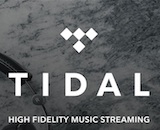 Tidal may still be a small player in subscriber numbers, but the high-res streaming platform is taking up a lion’s share of news in recent months. Today, we have more information about what Tidal will look like under the helm of Jay-Z and his business enterprise.
Tidal may still be a small player in subscriber numbers, but the high-res streaming platform is taking up a lion’s share of news in recent months. Today, we have more information about what Tidal will look like under the helm of Jay-Z and his business enterprise.
First, the business model has shifted to a two-tier system, but neither is free. Accessing the catalog of lossless files costs $19.99 a month, but people who aren’t as concerned about the sound quality can pay a $9.99 a month fee for access to streaming compressed files that are more common for online music. The website’s location has also changed from tidalhifi.com to the more easily remembered tidal.com. Another part of the brand’s big relaunch with new ownership and a new unified brand is a new partnership with Sonos. Tidal had only been available in beta on the home speaker systems in three markets, but it has rolled out for Sonos in all nations where the streaming platform is present.
Beyond any features or partnerships for Tidal, the big change was in rhetoric. When we initially reviewed Tidal, the brand’s message was about bringing better music quality to the online space. But the new message Jay-Z and his compatriots presented at the press event yesterday was furthering the artists’ cause. R&B musician Alicia Keys spoke at the event and called the revamped Tidal “the first ever artist-owned global music and entertainment platform.”
The idea of being a streaming service for and by the artists is a fine one, but it still needs to make a pitch to listeners in order to stay afloat. We’re still skeptical of how big a difference lossless files make for the average listener. For a culture that is still trying to convince most listeners that a $10 subscription is a worthy investment, doubling that for a small improvement in sound quality is going to be an uphill battle. While Jay-Z is the most visible leader of the company and he has a huge amount of cache in the music and business worlds, is his endorsement enough to grow the niche service into a real global player? We’ll find out soon enough.

One of the big hurdles Tidal and other high-resolution streaming services will have is getting into the workplace, as many IT admins will likely block it due to the huge amount of bandwidth it may consume in work settings. While most use 32kbps wma or 64kbps mp3/m3u or the slightly less common 96kbps or 128kbps bitrates, these new hi-res sites will use 256kbps bitrates, just barely under the maximum 320kbps that mp3 was designed for.
So if you have 50 people streaming that site’s content, and someone else trying to deliver a business presentation, another showing some stuff to new trainees, etc., and the list goes on and on as to what could be going on in a workplace, this is web-filter bait for sure.
The other issue is mobile bandwidth caps and this, more than double to quadruple what something like Pandora does. That is going to be another hurdle to acceptance of high-resolution streaming audio.